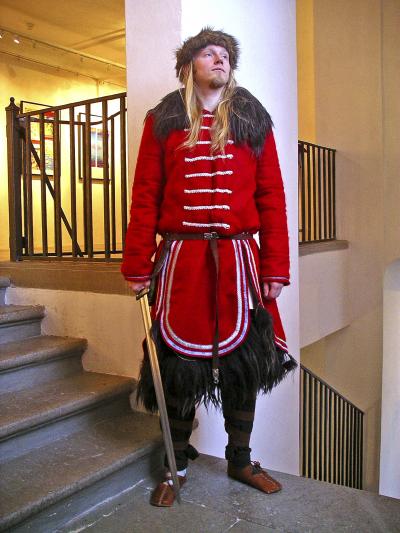Vivid colors, flowing silk ribbons, and glittering bits of mirrors - the Vikings dressed with considerably more panache than we previously thought. The men were especially vain, and the women dressed provocatively, but with the advent of Christianity, fashions changed, according to Swedish archeologist Annika Larsson.
"They combined oriental features with Nordic styles. Their clothing was designed to be shown off indoors around the fire," says textile researcher Annika Larsson, whose research at Uppsala University presents a new picture of the Viking Age.
She has studied textile finds from the Lake Mälaren Valley, the area that includes Stockholm and Uppsala and was one of the central regions in Scandinavia during the Viking Age. The findings, some of which were presented in her dissertation last year, show that what we call the Viking Age, the years from 750-1050 A.D., was not a uniform period.

Through changes in the style of clothing we can see that medieval Christian fashions hit Sweden as early as the late 900s and that new trade routes came into use then as well. The oriental features in clothing disappeared when Christianity came and they started to trade with the Christian Byzantine and Western Europe.
"Textile research can tell us more about the state of society than research into traditions. Old rituals can live on long after society has changed, but when trade routes are cut off, there's an immediate impact on clothing fashions," says Annika Larsson.
She maintains that Swedish Viking women in the pre-Christian period probably dressed much more provocatively than we previously believed. She bases her theory on a new find uncovered in Russian Pskov, close to Novgorod and the eastward trade routes then plied from Sweden. The find consists of extensive remnants of a woman's attire, which Annika Larsson claims does not square with the traditional picture of how Viking women dressed.





Comments